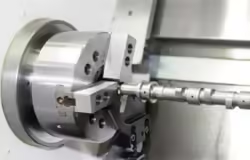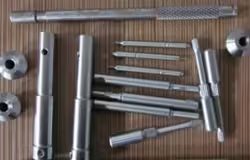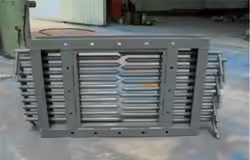
Latest Insights on Billet Forging for Industry
Table of Contents
Introduction

Billet forging is a high-precision, high-strength metal forming process, critical for industries requiring superior mechanical properties. By converting billets into near-net shape components, the process improves grain structure, enhances fatigue performance, and optimizes material efficiency.
Applications range from aerospace turbine shafts to automotive suspension components and high-pressure oil & gas valves, where mechanical reliability under cyclic loading is non-negotiable.
Fundamentals of Billet Forging
Understanding Billet Forging
Billet forging is a precision metal forming process where semi-finished metal billets are plastically deformed under compressive forces, often with carefully controlled heating. Unlike casting, where molten metal solidifies with random grain orientation, forging aligns the metal grains along the load paths, creating superior mechanical performance. This grain alignment enhances yield strength, tensile strength, fatigue resistance, and fracture toughness, making billet-forged components suitable for high-stress industrial applications.
Microstructural Insight:
During hot forging, dynamic recrystallization occurs. This process refines grain size and ensures uniform distribution of alloying elements such as chromium, molybdenum, nickel, and vanadium. The result is a more homogeneous microstructure with minimal inclusions or internal defects, a common problem in casting processes.
Hot Forging vs Cold Forging
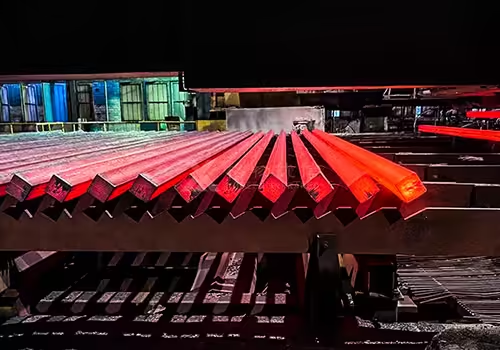
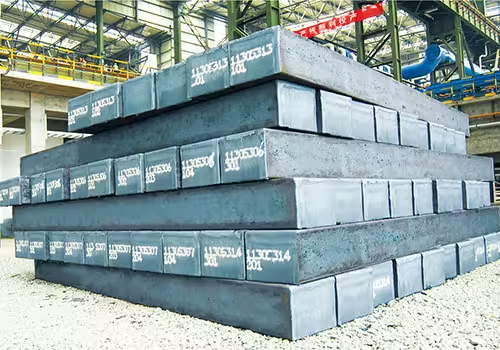
Hot Forging is performed above the material’s recrystallization temperature, typically between 950–1250°C for steel billets. This high-temperature environment increases metal ductility, reduces required forging forces, and lowers the risk of microcracks during shaping. Hot forging is ideal for complex components like aerospace turbine shafts and large automotive parts.
Cold Forging, on the other hand, is conducted near ambient temperatures. The metal is hardened as it deforms, enhancing dimensional accuracy and surface finish. This method is highly suitable for high-volume production of precision components, such as fasteners or small automotive parts, where strict tolerances are required.
Process Insight:
Choosing between hot and cold forging depends on material, geometry, and production volume. While hot forging optimizes mechanical performance, cold forging improves surface quality and repeatability.
Material Selection and Metallurgical Considerations
The choice of billet material significantly affects process parameters, mechanical performance, and post-forging treatments.
- Carbon Steel: Provides high strength and versatility, often used in general industrial components.
- Alloy Steel: Offers enhanced fatigue and wear resistance, ideal for gears, shafts, and heavy-duty machinery.
- Stainless Steel: Corrosion-resistant and used in chemical, marine, and sanitary applications, frequently paired with solution annealing.
- Aluminum and Titanium Alloys: Lightweight with high strength-to-weight ratios, commonly used in aerospace and high-performance automotive applications.
Microstructural Note:
Alloying elements influence phase transformation, grain refinement, and mechanical anisotropy. For instance, vanadium refines grain size, improving toughness, while chromium enhances hardenability and wear resistance. Proper thermal management ensures uniform properties throughout the billet, preventing residual stresses and potential failure points.
Advanced Process Mechanics
Deformation Mechanics:
Billet forging relies on compressive stress to plastically deform the metal. Optimizing die design ensures proper grain flow, aligning the internal structure along stress paths and reducing zones susceptible to fatigue or fracture. Controlling the strain rate—typically 10–100 s⁻¹ for hot forging—further influences recrystallization behavior and residual stress distribution.
Die Design and Simulation:
Modern forging employs Finite Element Analysis (FEA) to simulate material flow, temperature gradients, and die stresses before production. This virtual approach predicts potential defects, optimizes tooling, and extends die lifespan, reducing scrap rates and improving efficiency.
Heat Treatment and Post-Processing:
- Normalizing or Quenching: Refines microstructure and relieves internal stresses.
- Tempering: Balances hardness and toughness for demanding service conditions.
- Surface Finishing: Techniques such as CNC machining, shot peening, or nitriding improve fatigue and wear resistance, ensuring longevity of the forged part.
Applications of Billet Forging
Automotive Industry
Billet forging is extensively used in the automotive sector for critical components like crankshafts, gears, and suspension arms. The process enables weight reduction without sacrificing fatigue resistance, directly contributing to fuel efficiency and vehicle durability.
Case Study:
A European automotive supplier replaced traditional forged steel gears with billet-forged components. The change achieved a 20% weight reduction and a 15% decrease in manufacturing costs, while maintaining excellent fatigue performance under high-cycle loading.
Aerospace Industry
In aerospace, billet forging produces structural components such as landing gear, turbine shafts, and fuselage fittings. The process ensures exceptional crack propagation resistance and compliance with FAA/EASA certification standards.
Case Study:
Forged aluminum turbine shafts underwent billet forging with precise thermal control. The result was a 25% improvement in fatigue life, meeting stringent aerospace safety standards and extending component service intervals.
Oil & Gas / Energy
High-pressure valves, pipeline connectors, and turbine shafts in oil & gas applications rely on billet forging for resistance to extreme pressure, temperature, and corrosive environments. Homogeneous microstructures reduce the risk of operational failure, ensuring safety in high-stakes applications.
Case Study:
A refinery replaced cast components with billet-forged valves. The new components demonstrated improved fatigue performance under cyclic pressure and enhanced corrosion resistance, reducing downtime and maintenance costs.
Technical Parameter Comparison
| Property / Process | Billet Forging | Casting | Machined Block |
|---|---|---|---|
| Grain Orientation | Aligned along stress | Random | Minimal control |
| Tensile Strength | 400–800 MPa | 200–400 MPa | 500–900 MPa |
| Yield Strength | 250–600 MPa | 120–300 MPa | 350–650 MPa |
| Fatigue Resistance | Excellent | Poor | Good |
| Residual Stress | Low (controlled) | High | Variable |
| Material Utilization | 90–95% | 60–70% | 70–80% |
| Cost Efficiency | Moderate | Low | High |
| Surface Finish | Medium (post-machine) | Rough | Excellent |
Insight: Billet forging provides superior fatigue and tensile performance while maintaining material efficiency, making it ideal for critical load-bearing components.
Standards and Compliance
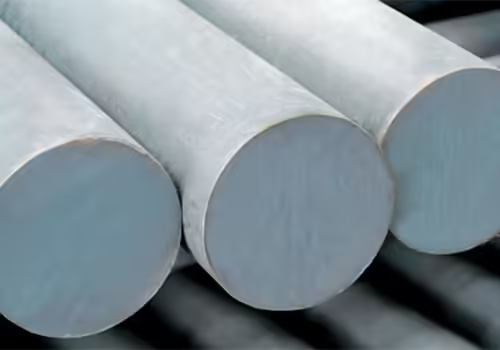
International Standards
- ASTM A668: Hot and cold-forged steel parts
- ISO 683: Heat treatment and mechanical testing
- SAE Standards: Automotive and aerospace components
Quality Assurance Practices
- Non-Destructive Testing: Ultrasonic, radiographic, or dye penetrant inspection
- Chemical Analysis: Confirms alloying element concentration
- Dimensional Inspection: CMM ensures adherence to tight tolerances
Real Example:
A European valve manufacturer implemented NDT and CMM inspections for billet forgings, reducing scrap by 15% while meeting EU mechanical standards.
Challenges and Engineering Solutions
Internal Voids and Microcracks
- Cause: Uneven billet temperature or insufficient deformation
- Solution: Thermal preconditioning, controlled die design, and optimal strain rates
High Machining Forces
- Cause: Forged alloys can be harder than cast steel
- Solution: Use carbide tooling, appropriate lubrication, and optimized feeds
Corrosion and Wear
- Apply surface treatments: nitriding, galvanizing, or plasma coatings for harsh environments
Emerging Trends
- AI-Assisted Forging: Predictive maintenance and real-time process control
- High-Performance Alloys: Lightweight and ultra-strong alloys for aerospace
- Digital Twin Simulation: Virtual testing for die design and defect prediction
- Sustainable Practices: Recycled billets and energy-efficient production
Conclusion
Billet forging is a cornerstone for high-performance, fatigue-resistant, and cost-efficient components across automotive, aerospace, energy, and industrial sectors.
Need expert guidance on billet forging solutions?
Our engineering team can provide tailored solutions for precision, material selection, and compliance. Contact us today to optimize your next project.
FAQ
What is the difference between billet forging and casting?
Billet forging aligns grain flow, improving strength and fatigue resistance; casting may have porosity and lower mechanical performance.
How does hot forging improve material properties?
It refines grain size, removes voids, and homogenizes alloy elements, enhancing toughness and fatigue life.
Which alloys are suitable for billet forging?
Carbon steels, alloy steels, stainless steels, aluminum, and titanium are common depending on strength, corrosion, and weight requirements.
Can billet forging replace machining from solid blocks?
Yes, it improves material efficiency, reduces internal defects, and lowers machining time.
How is quality controlled in industrial billet forging?
Through NDT, chemical composition analysis, thermal profiling, and dimensional inspections using CMM.
Are billet-forged components recyclable?
Yes. Forged metals can be melted and reused, making billet forging a sustainable manufacturing option.
Can advanced simulation improve billet forging quality?
Yes. Digital twin simulations and FEA models predict material flow, temperature gradients, and potential defects before production, optimizing die design and reducing scrap.
What industries benefit most from billet forging?
Automotive, aerospace, oil & gas, energy, heavy machinery, and defense industries benefit most due to the high mechanical performance and reliability of forged components.




